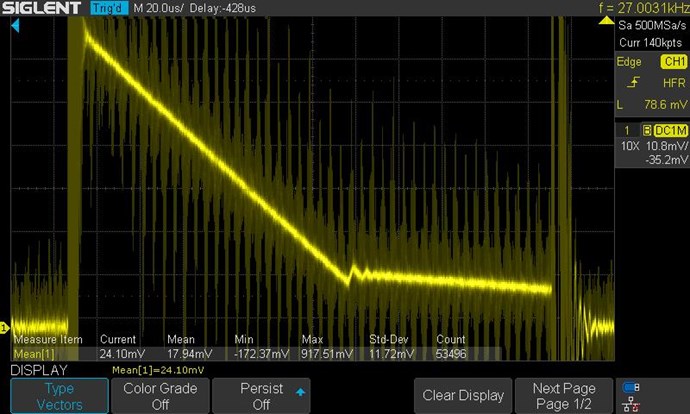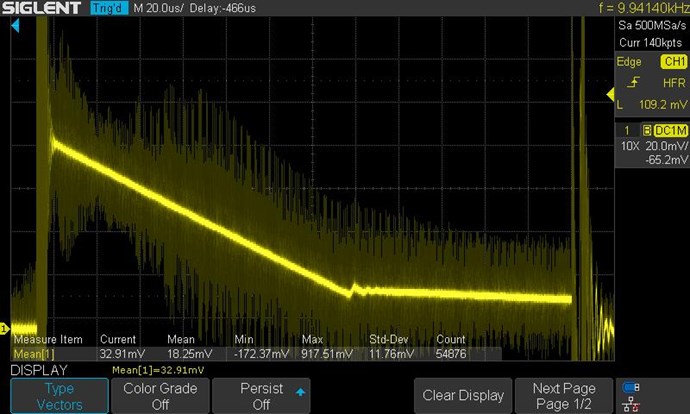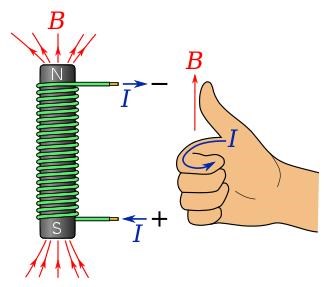Hello Everyone,
First I want to thank Chris for sharing his work and his advice, it is sincerely appreciated, thank you.
I have been working on this setup for a little while now to understand how it works. I'm not yet at the stage of taking measurements or optimizations but rather trying to get the waveform(s) and ensure everything is working while I learn the fundamentals.
So I would like to share where I currently am to be sure I stay on track, and with that, any criticisms or suggestions are more than welcome and appreciated.
This is my current setup, my primary is 45 turns of #15, both POCs are 180 turns of #18 and are 284mH and 281mH for POC1 and 2 respectively.
My coil and output circuit: setup
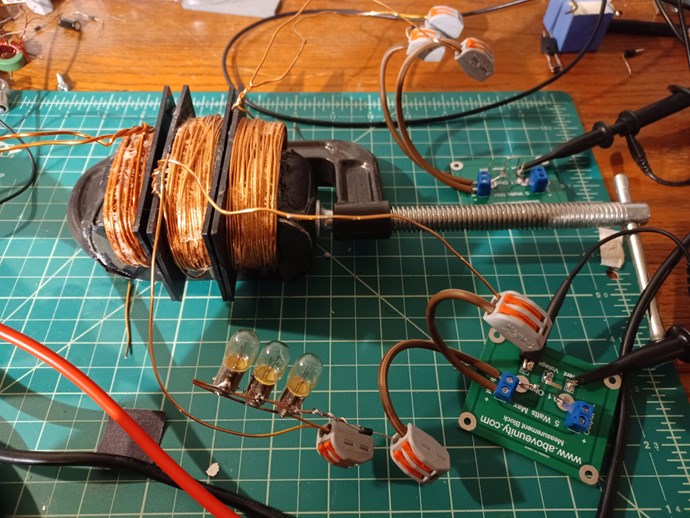
POC1 is loaded by 3 flashlight bulbs in parallel making 1.7ohms when cold. In the following trace the bulbs are not illuminated so I assume it should still be near that 1.7ohm value.
POC2 is a short circuit thru the diode and .1 ohm current sense resistor.
Operating frequency is 4,240hz @ 46% duty cycle.
Power input is 4.6V and 170mA
I made a small mistake with the POC 1 yellow trace, the scope is set to 1x by mistake but my probe was 10x. The purple trace is a 100x probe and without the ground connected. I do not trust its numbers, I was just using it to see the waveforms together the best I knew how.
Scope trace of my current progress:
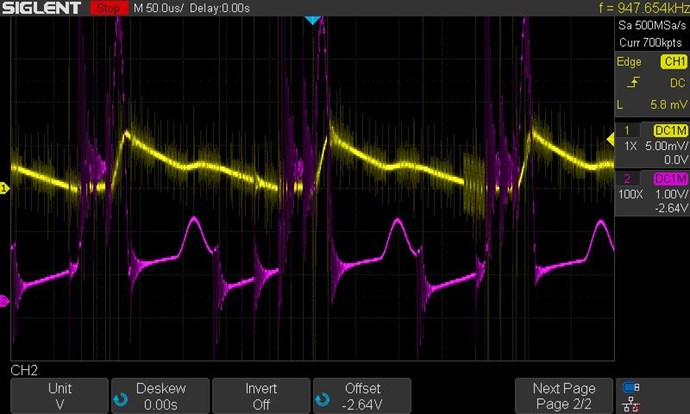
Yellow is POC 1
Purple is POC 2
I'm not sure how to interpret my POC2 (purple) trace but one thing I think is on the down slope of POC1 there looks to be a positive feedback that is coming from the POC2 waveform and the inverted ramp seems to be changing the rate of decrease in current of POC1.
I'll add that my driver has a 279V TVS diode and 100nF capacitor across the drain and source of my mosfet to prevent breakdown of the mosfet and it has fixed my issue of burning them up.
I'm still trying to connect the dots and it's been a long 3 days so I think that's all I have for now. I am looking forward to progress though!
Be Well,
Matt






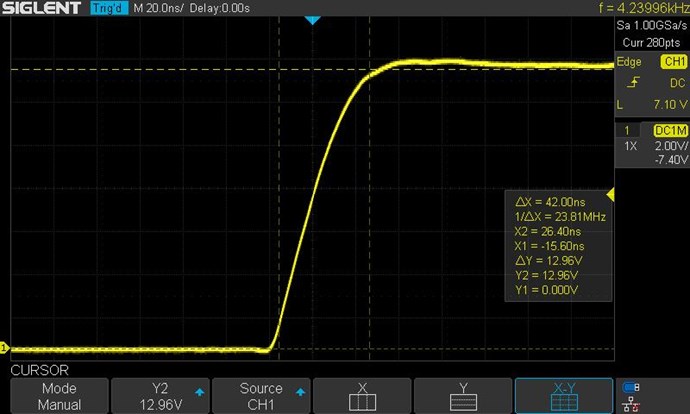
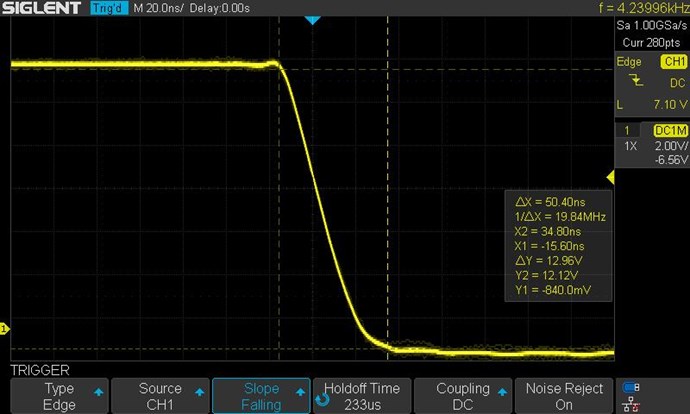
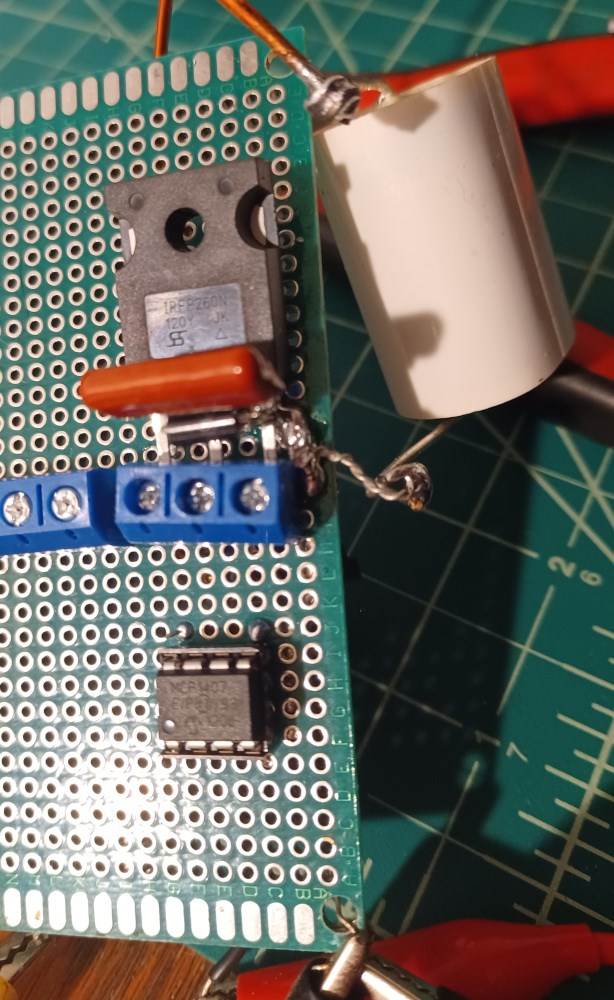
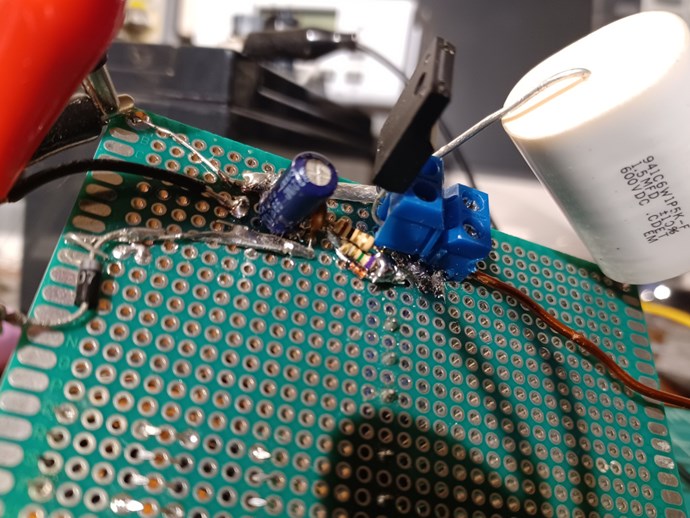

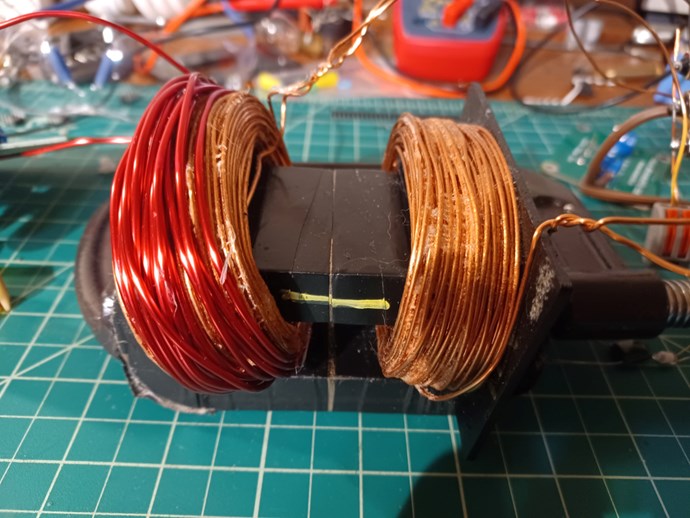
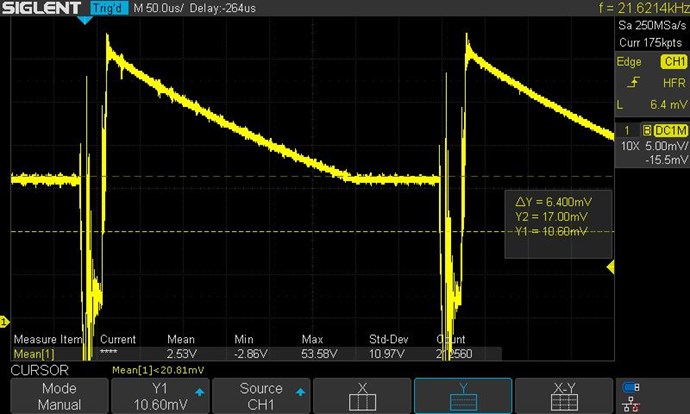 . The cursor lines can be ignored, I just forgot to turn them off.
. The cursor lines can be ignored, I just forgot to turn them off.